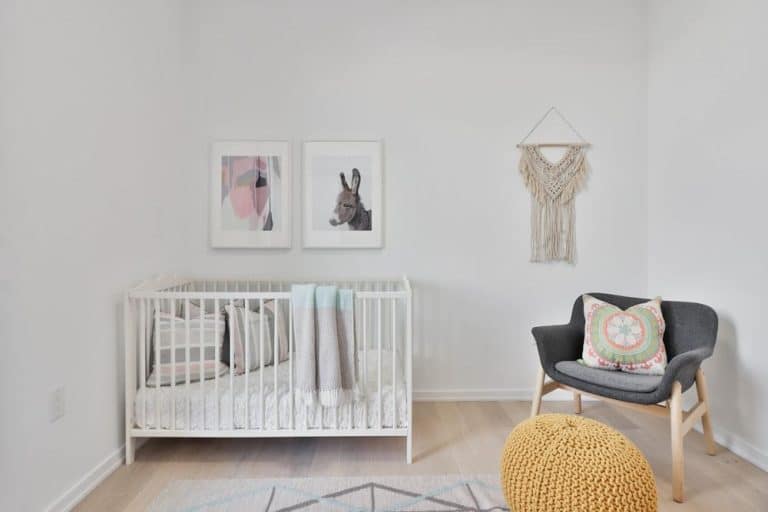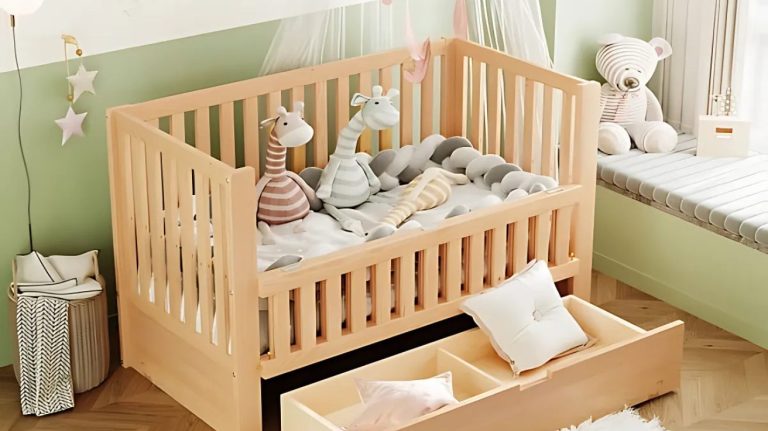Introduction to Small-Space Living
Living in a small space can present unique challenges, especially when it comes to furnishing a home. As a new parent, creating a nursery for your baby may seem like an overwhelming task in limited square footage. However, with careful planning and the right small-space solutions, you can maximize the space available and create a functional and stylish nursery for your little one.
Challenges of Furnishing a Small Space
Furnishing a small space comes with its own set of challenges. Limited square footage means every inch counts, and finding furniture that fits can be a struggle. Traditional baby furniture can often be bulky and take up valuable space. Additionally, organizing and storing baby essentials can be a challenge when space is limited. However, with the right approach and a focus on maximizing space, these challenges can be overcome.
To start, it’s important to assess the available space and identify the specific needs of your nursery. Consider the dimensions of the room and take note of any architectural features or constraints. This will help you determine what furniture and storage solutions will work best for your space.
Benefits of Using Small-Space Solutions for Baby Furniture
Using small-space solutions for baby furniture offers numerous benefits. First and foremost, it allows you to optimize the available space in your nursery. By choosing compact furniture pieces, you can maximize floor space and create a more open and spacious feel.
Additionally, small-space solutions often come with built-in storage options. This is especially important in a nursery, where you need to store diapers, clothing, toys, and other baby essentials. By selecting furniture that combines functionality with storage, you can keep your nursery organized and clutter-free.
Moreover, small-space solutions are often designed with versatility in mind. Many furniture pieces can serve multiple purposes, saving you both space and money. For example, a changing table that doubles as a dresser or a crib that converts into a toddler bed can adapt to your child’s changing needs and help you make the most of your limited space. Speaking of a crib that converts into a toddler bed, Craft Child is one of the top crib manufacturers that supply this kind of baby crib.
Planning Your Nursery Layout
Before you start shopping for baby furniture, it’s essential to plan your nursery layout. Begin by measuring the dimensions of the room and taking note of any architectural features such as windows, doors, or built-in closets. This will help you determine the best placement for furniture pieces and ensure they fit properly.
Next, consider the flow and functionality of the space. Arrange your furniture in a way that allows for easy movement and accessibility. For example, place the crib near the entrance of the room for quick access, and position the changing table and storage solutions within arm’s reach.
Don’t forget to leave room for growth. While your baby may be small now, they will quickly outgrow their nursery. Choose furniture that can adapt to their changing needs, such as cribs that convert into toddler beds or dressers with removable changing toppers. This will save you from having to purchase new furniture as your child grows.
Choosing the Right Compact Baby Furniture
When it comes to selecting baby furniture for small spaces, opting for compact and streamlined pieces is key. Look for furniture that is specifically designed for small spaces, such as mini cribs, narrow dressers, and space-saving storage solutions.
Consider the functionality and versatility of each piece. Look for cribs with adjustable mattress heights or cribs that can be converted into a toddler bed or daybed. These features will ensure that your furniture grows with your child and can be used for years to come.
Another important factor to consider is the quality and durability of the furniture. Investing in well-made pieces will not only ensure their longevity but also provide a safe and comfortable environment for your baby. Look for furniture that meets safety standards and has sturdy construction.
Multi-Purpose Furniture for Small Nurseries
In a small nursery, multi-purpose furniture is a game-changer. Look for furniture pieces that serve multiple functions and save you valuable space. Here are a few examples:
- Convertible cribs: These cribs can be transformed into toddler beds, daybeds, or even full-size beds, allowing you to use the same piece of furniture for years to come.
- Changing tables with built-in storage: Instead of a standalone changing table, opt for one that has drawers or shelves underneath. This provides additional storage space for diapers, wipes, and other baby essentials.
- Rocking chairs with hidden storage: Look for rocking chairs or gliders that have hidden storage compartments in the armrests or under the seat. This allows you to keep blankets, burp cloths, and other items within reach but out of sight.
- Chests with changing toppers: Instead of a separate changing table, consider a chest of drawers with a removable changing topper. This combines two essential pieces of furniture into one and saves valuable floor space.
By choosing multi-purpose furniture, you can maximize the functionality of your nursery without sacrificing space.
Creative Storage Solutions for Baby Essentials
Storage is a crucial consideration in a small-space nursery. With limited square footage, it’s important to think creatively and utilize every available inch for storage. Here are some ideas for maximizing storage in your small nursery:
- Vertical storage: Take advantage of vertical space by installing shelves or wall-mounted storage units. This allows you to store items off the floor and frees up valuable surface space.
- Under-crib storage: Many cribs now come with built-in storage drawers underneath. Utilize this space for storing extra bedding, blankets, or clothing.
- Hanging organizers: Hang organizers on the back of doors or on the wall to store diapers, wipes, and other small items. This keeps essentials within reach while minimizing clutter.
- Bins and baskets: Use bins and baskets to categorize and store baby essentials. Label each container to keep things organized and easily accessible.
Remember, it’s important to keep your nursery organized and clutter-free to create a peaceful and functional space for both you and your baby.
Safety Considerations for Small-Space Nurseries
Ensuring the safety of your baby is paramount in any nursery, but it becomes even more crucial in a small space where hazards can easily be overlooked. Here are some safety considerations to keep in mind:
- Anchor furniture: Secure heavy furniture such as dressers and bookshelves to the wall to prevent tipping. This is especially important as your baby starts to crawl and pull themselves up.
- Choose low-profile furniture: Opt for furniture with a low profile to minimize the risk of accidents. Avoid tall bookshelves or dressers that could be climbed on.
- Eliminate cords: Keep cords from blinds or curtains out of reach and secure them with cord wraps or clips. This prevents strangulation hazards.
- Use outlet covers: Cover electrical outlets with childproof covers to prevent accidents.
By taking these safety precautions, you can create a secure environment for your baby in a small-space nursery.
Design Tips for Visually Expanding a Small Nursery
In a small nursery, it’s important to create an illusion of space and openness. Here are some design tips to visually expand your small nursery:
- Light colors: Opt for light-colored walls, furniture, and bedding to create a bright and airy feel. Light colors reflect light and make a space appear larger.
- Mirrors: Hang a mirror on the wall to create the illusion of depth and reflect light. This adds visual interest and expands the perceived space.
- Maximize natural light: Keep window treatments minimal to allow as much natural light as possible into the room. Natural light opens up a space and makes it feel larger.
- Vertical stripes: Use vertical stripes in wallpaper or paint to draw the eye upward and create the illusion of height. This visually expands the space.
Remember, less is more in a small nursery. Avoid clutter and keep decorations minimal to maintain a sense of openness and tranquility.
Conclusion and Final Thoughts
Furnishing a small-space nursery may seem like a daunting task, but with the right small-space solutions, it can be both practical and stylish. By planning your nursery layout, choosing compact furniture, utilizing multi-purpose pieces, and incorporating creative storage solutions, you can maximize the space available and create a functional and inviting nursery for your baby.
Remember to prioritize safety and consider the specific needs of your space when selecting furniture and organizing storage. By incorporating design tips that visually expand the room, you can create the illusion of a larger space and make the most of your small nursery.









